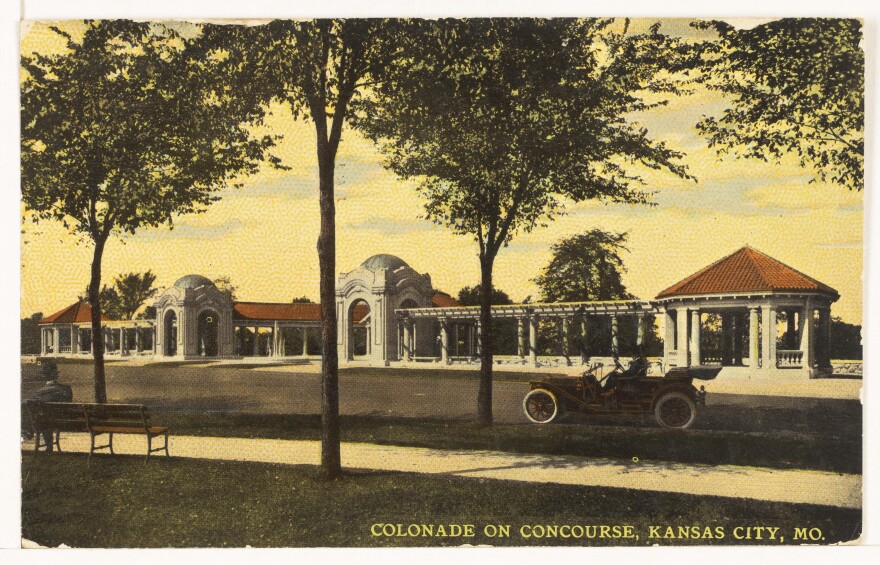After Quality Hill — the historic district situated on 200-foot-high bluffs overlooking West Bottoms — Pendleton Heights in the Historic Northeast is Kansas City’s second oldest residentially-designed neighborhood.
If you’ve spent much time there, you know the area is teeming with Victorian houses, notable landmarks, parks and community gardens — not to mention diverse food options and markets.
Geographically, Pendleton Heights is bordered by Independence Avenue to the south, Chestnut Trafficway to the east and The Paseo to the west. The north side sits on cliffs, with East Bottoms and the Missouri River below. On a good day, from the top of those cliffs, you can see clear to Kansas City, Kansas.
Here, we’ve also included points of interest in the Scarritt Renaissance neighborhood, located just east of Pendleton Heights. As you follow Independence Avenue through both historic districts, drift north a bit and check out thoroughfares like Gladstone Boulevard, Cliff Drive and St. John Avenue.
You can also check out KCUR's beginner's guide to Columbus Park here.
Kansas City Museum

An impressive four-story, 70-room mansion at the northernmost tip of Scarritt Renaissance, Kansas City Museum reopened in 2021 after a renovation that spanned seven years. A Beaux-Arts style mansion, the building was built by lumber baron Robert A. Long in 1910 for $1 million — the equivalent of $29.1 million today — and named Corinthian Hall.
After his death in 1934, Long’s daughters emptied the mansion of its furnishings and opened it to the public as a history and science museum, then as a natural history museum, complete with fossils, rocks, minerals, a 50-seat planetarium and an ice cream parlor.
Today, the museum is governed, managed and operated by the Kansas City Museum Foundation. It still features an ice cream parlor, as well as exhibits curated to “engage visitors in unfolding stories about Kansas City’s vibrant history, cultural heritage and pride.”
The museum also hosts a number of annual events, guided tours, house concerts and more. Check out the museum's upcoming events here.
PH Coffee

If you're looking for a new work or study spot — or you just like roaming neighborhoods in search of the best cup of joe — a visit to PH Coffee may be in your future. The environs are charmingly industrial: stools lined up along a giant window bar, exposed brick and a bright tiled ceiling.
Along with matcha and single origin espresso drinks, the coffee shop serves canned cocktails and local brews, plus vegan scones, breakfast burritos and sandwiches.
PH is all about community events, regularly hosting pop-ups with other small local businesses as well as Chiefs watch parties, with the game playing on a projector screen. There’s even a dedicated spot inside with crafting supplies for the kids.
Cliff Drive Scenic Byway

Located in George E. Kessler Park — a 300-acre green space named after the famed city planner and landscape architect — Cliff Drive is one of Kansas City’s best-kept recreation secrets. The scenic byway is a little over four miles long, extending from The Paseo and Independence Avenue through Indian Mound on Gladstone Boulevard.
According to Kansas City Parks & Recreation, Cliff Drive “preserves natural features unique to this portion of the Missouri River Valley including limestone bluffs, natural vegetation and wildlife, particularly unusual because it is located immediately adjacent to the city core within a heavily urbanized environment.”
Not only can you walk, roll or hike amongst towering cliffs and mature forests, you can also rock climb at the Cliff Drive Sport Climbing Area, play disc golf near an abandoned reservoir or take photographs of the Kessler Waterfall, officially known as the Carl Dicapo Fountain. Cliff Drive is currently closed to motorized vehicles every day.
San Antonio Market

There are a ton of great carnicerias, or butcher shops, and tortillerias in the Historic Northeast part of Kansas City — and in Kansas City, Kansas — but this one on Independence Avenue is special.
Half specialty grocery store, half cafetería, San Antonio Market stocks traditional Mexican ingredients, as well as fresh fruit, vegetables, meat and fish. Making tamales and in need of fresh masa? They got it. Huge flour tortillas? Check. Hard-to-find dried chili peppers? Of course.
But the crown jewel? The cafetería, and its rotating spit of al pastor. Originating in the Central Mexican region of Puebla, al pastor is boneless pork shoulder that’s been stacked and spit-grilled on a vertical rotisserie called a trompo. It’s then sliced off and served in a corn tortilla.
At San Antonio, look for the little cart with condiments like spicy red salsa, salsa verde, chopped onions, lime and cilantro.
Scarritt Point & The Colonnade

A row of antiquated houses sits north of Kansas City Museum, one at 3400 Norledge Avenue. Built of limestone in 1899, it was home to the daughter of Nathan Scarritt, a Methodist minister who owned much of the property in Scarritt Renaissance in the mid-1800s. Near the house is Scarritt Point, where Scarritt’s log cabin once stood.
Following Gladstone Boulevard south toward St. John Avenue, you’ll come upon a historic landmark known as The Colonnade. It was built in 1908 and designed by Henry Wright, a city planner who wanted to map out communities around “largely undeveloped, wild, or agricultural land surrounding or neighboring urban areas.”
These spaces were known as Garden Cities, and perhaps they inspire the current plans for the South Loop Park Project, which would cover a stretch of Interstate 670 from Wyandotte Street to Grand Boulevard with trees and grass.
As for The Colonnade, the structure was built in the Beaux-Arts style of architecture, known for its distinct focus on symmetry, classical details, stone, statues and fountains and long hallways supported by arches, or arcades.






